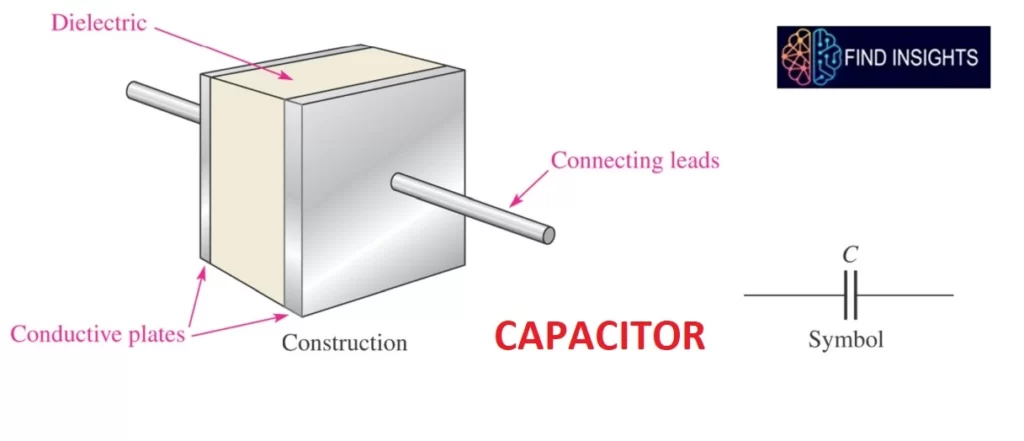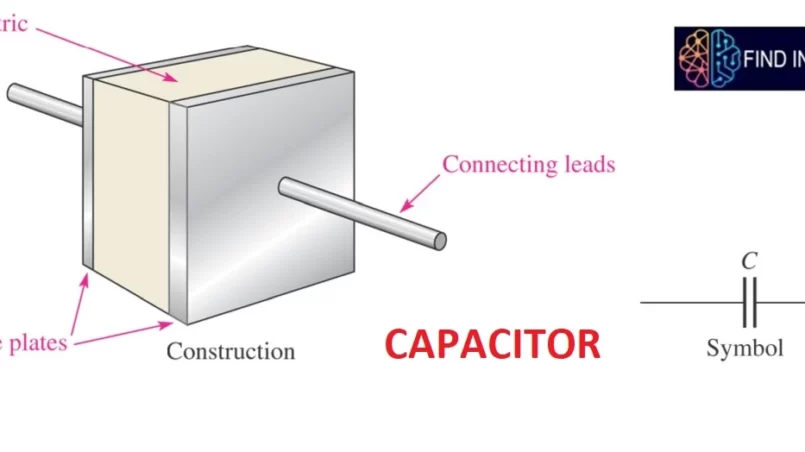
How does a Capacitor Works : Working Principle & Characteristics
Introduction:
A Capacitor is a device which stores electric charge. In this article let’s see how does a capacitor works, Working principle & Characteristics.
What is the Capacitor
- A Capacitor is a two-terminal Electrical component used to store energy in Electric field.
- Capacitors have many important applications in electronics. Some examples include storing electric potential energy, delaying voltage changes when coupled with resistors, filtering out unwanted frequency signals, forming resonant circuits and making frequency-dependent and also independent voltage dividers when combined with resistors. Some of these applications will be discussed in latter chapters
Must Read: WHAT ARE THE USES OF CAPACITOR

- A capacitor consists of 2 conductors (e.g Al foil) separated by a non-conductive substance or dielectric . This dielectric can be mica, air, glass, paper, plastic, ceramic, cellulose, teflon,…
How does a Capacitor Works

- In the neutral state, both plates have an equal number of free electrons
- When a voltage source is connected to the capacitor, electrons are removed from one plate and also an equal number are deposited on the other plate
- No electrons flow through the dielectric (insulator)
Capacity (Capacitance) of a Device

Capacitor Working
Capacitance of a Device is the amount of charge that a capacitor can store when applied a voltage. Capacitance is proportional to charge and inversely proportional to voltage

- An electric charge deposited on one of the conductors induces an equal charge of opposite polarity on the other conductor. As a result, an electric field exists between the two conductor surfaces and also there is a potential difference between them.
- The electric field anywhere between the conductor surfaces is directly proportional to the magnitude of the charge Q on the conductors. And the potential difference V is also directly proportional to the charge Q. The ratio Q/V is thus a constant for any electric field distribution as determined by the shape of the conductors, the distance of separation, and also the dielectric in which the field exists.
How a Capacitor Stores Energy
- A capacitor stores energy in the form of an electric field that is established by the opposite charges on the two plates
- A capacitor obeys Coulomb’s law: A force exists between two point-source charges that is directly proportional to the product of the two charges and also inversely proportional to the square of the distance between the charges
Characteristics of a Capacitor
- Capacitance is directly proportional to the physical size of the plates as determined by the plate area
- Capacitance is inversely proportional to the distance between the plates
- The measure of the dielectric material’s ability to establish an electric field is called the dielectric constant. Capacitance is directly proportional to the dielectric constant
- The measure of how much voltage a capacitor can handle across it’s plates is called dielectric strength or breakdown voltage. All capacitors specify a safe voltage at which to operate the capacitor.
- Most capacitors have a very thin dielectric and also a very large plate area (often stacked or rolled up).
Capacitor FAQ
How does a capacitor charge?
When positive and negative charges coalesce on the capacitor plates, the capacitor becomes charged
What is the working principle of a capacitor?
Capacitance of a Device is the amount of charge that a capacitor can store when applied a voltage. Capacitance is proportional to charge and inversely proportional to voltage. A capacitor obeys Coulomb’s law: A force exists between two point-source charges that is directly proportional to the product of the two charges and also inversely proportional to the square of the distance between the charges
What is the purpose of a capacitor?
Capacitors have many important applications in electronics. Some examples include storing electric potential energy, delaying voltage changes when coupled with resistors, filtering out unwanted frequency signals, forming resonant circuits and making frequency-dependent and also independent voltage dividers when combined with resistors. Some of these applications will be discussed in latter chapters
What is another name of a capacitor?
A capacitor, also called a condenser, is thus essentially a sandwich of two plates of conducting material separated by an insulating material, or dielectric. Its primary function is to store electrical energy
LIKE WHAT YOU’RE READING?
CHECK OUT SOME OF OUR OTHER GREAT CONTENT HERE:
- LVDT- CONSTRUCTION, WORKING PRINCIPLE , APPLICATIONS, ADVANTAGES, AND DISADVANTAGES
- SCR VI CHARACTERISTICS EXPLAINED IN DETAIL
- STEP UP TRANSFORMER: DEFINITION, CONSTRUCTION, WORKING & APPLICATIONS
- LIMITATIONS OF OHM’S LAW
- INDUCTION MOTOR: WORKING PRINCIPLE, TYPES & APPLICATION
- STRAIN GAUGE WORKING PRINCIPLE
- WHAT IS THE ZENER DIODE? – EXPLAINED
- WHAT IS OPERATING SYSTEM AND ITS TYPE
- WHAT ARE THE USES OF CAPACITOR
- WHAT ARE THE APPLICATIONS OF OP AMP?
- HOW AN IGBT WORKS?
- VARIOUS USES OF A RESISTOR
- HOW THE MOSFET WORKS?
- POWER FACTOR IMPROVEMENT METHODS
- WORKING PRINCIPLE OF SYNCHRONOUS MOTOR
- WHAT IS A UNIVERSAL MOTOR ?




2 Comments